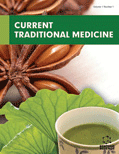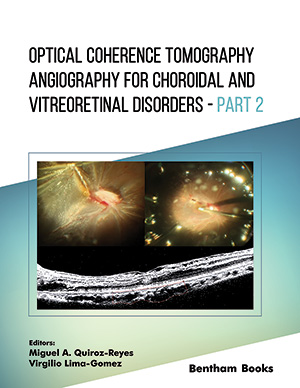Abstract
The prevalence of plant-based medicine has risen worldwide, not only as part of conventional treatment but also for health care management. The authenticity and quality of herbal medicines impact these medications' safety and effectiveness in clinical treatment. So, it is necessary to identify the chemical composition and quality of pharmacologically active ingredients in the plants as there is no pertinent data regarding the exact dose of the Herbal based medicine. Similarly, the Indian system of Medicine (ISM) based products may vary in composition and properties, and increasing reports of adverse reactions have drawn the attention of many regulatory agencies for the quality evaluation of traditional formulations. Moreover, ISM's quality control has always been an important domain, and its current quality standards have a complex effect to assure clinical efficacy. The Quality marker (Q-marker) technique is a new approach in Chinese traditional medicines to enhance and empower Chinese herbal drugs by focusing on each step of the plant processing from its growing phases to the marketed product formulation. The present review highlights the application of Q-marker and its tools for the establishment of quality standards of herbal drugs. Besides, this work also highlighted complies few Q-marker-based traditional Chinese medicines case studies. We expect that it would benefit the manufacturing process control and quality management of the Indian system of medicine. This work could provide a new direction for Q marker in the Indian system of medicine and contribute in the modernization and globalization of the Indian system of Medicine.
Keywords: Indian system of medicine, Quality marker, multidisciplinary technologies, multicomponent determination, Quality control system, mass spectrometry.
[http://dx.doi.org/10.4314/ajtcam.v4i3.31226] [PMID: 20161896]
[http://dx.doi.org/10.1023/B:BIOC.0000021333.23413.42]
[http://dx.doi.org/10.1016/j.jtcme.2016.05.006] [PMID: 28417092]
[http://dx.doi.org/10.1007/s42965-020-00125-2]
[http://dx.doi.org/10.1039/C7RA09475B] [PMID: 35538992]
[http://dx.doi.org/10.2147/BTAT.S66308]
[http://dx.doi.org/10.4314/ajtcam.v2i1.31103]
[PMID: 22556454]
[http://dx.doi.org/10.1517/17460441.2.12.1631]
[http://dx.doi.org/10.1093/ecam/neh140] [PMID: 16322803]
[http://dx.doi.org/10.1016/j.foodcont.2005.03.010]
[http://dx.doi.org/10.1093/jaoac/86.3.467] [PMID: 12852560]
[http://dx.doi.org/10.1002/jms.933] [PMID: 16278935]
[http://dx.doi.org/10.1080/13880209.2016.1266671] [PMID: 27982733]
[http://dx.doi.org/10.1016/j.indcrop.2019.111980]
[http://dx.doi.org/10.1080/01496390802691265]
[http://dx.doi.org/10.5897/JPP2015.0372]
[http://dx.doi.org/10.1016/j.indcrop.2018.10.012]
[http://dx.doi.org/10.14719/pst.2018.5.3.413]
[http://dx.doi.org/10.4103/0975-9476.74435] [PMID: 21731372]
[http://dx.doi.org/10.4314/ajtcam.v8i5S.7] [PMID: 22754067]
[PMID: 21369407]
[http://dx.doi.org/10.1001/jamanetworkopen.2018.1662] [PMID: 30646106]
[http://dx.doi.org/10.1002/9783527609987.ch2]
[http://dx.doi.org/10.3390/plants6040042] [PMID: 28937585]
[http://dx.doi.org/10.1155/2016/7985167] [PMID: 27429981]
[http://dx.doi.org/10.1080/10412905.2005.9698950]
[http://dx.doi.org/10.1590/S0301-80592000000400001]
[http://dx.doi.org/10.1080/10934528209375019]
[http://dx.doi.org/10.1016/j.phymed.2018.04.005] [PMID: 30318153]
[http://dx.doi.org/10.1016/j.apsb.2014.04.001] [PMID: 26579382]
[http://dx.doi.org/10.1016/j.apsb.2017.04.012] [PMID: 28752028]
[http://dx.doi.org/10.1016/j.phymed.2018.03.031] [PMID: 30318152]
[http://dx.doi.org/10.3390/molecules22091443] [PMID: 28858254]
[http://dx.doi.org/10.1093/chromsci/bmaa015] [PMID: 32266386]
[http://dx.doi.org/10.1016/j.phymed.2019.152928] [PMID: 31451286]
[http://dx.doi.org/10.2533/chimia.2011.944] [PMID: 22273377]
[http://dx.doi.org/10.1016/j.phymed.2019.153165] [PMID: 31954259]
[http://dx.doi.org/10.1016/j.eng.2019.01.015] [PMID: 32288963]
[http://dx.doi.org/10.1016/j.indcrop.2020.112883]
[http://dx.doi.org/10.1016/j.phymed.2021.153535] [PMID: 33819766]
[http://dx.doi.org/10.1186/s13065-020-00666-6] [PMID: 31922150]
[http://dx.doi.org/10.1016/j.phymed.2018.02.009] [PMID: 29551645]
[http://dx.doi.org/10.3389/fphar.2020.602092]
[http://dx.doi.org/10.3390/ijms19061578] [PMID: 29799486]
[http://dx.doi.org/10.3389/fphar.2020.578970] [PMID: 33737875]
[http://dx.doi.org/10.1038/nbt.2380] [PMID: 23051806]
[http://dx.doi.org/10.1016/j.jiph.2020.05.009] [PMID: 32451258]
[http://dx.doi.org/10.1186/s43094-020-00091-5]
[http://dx.doi.org/10.20959/wjpr20178-9091]
[http://dx.doi.org/10.3164/jcbn.2007001] [PMID: 18392106]





























